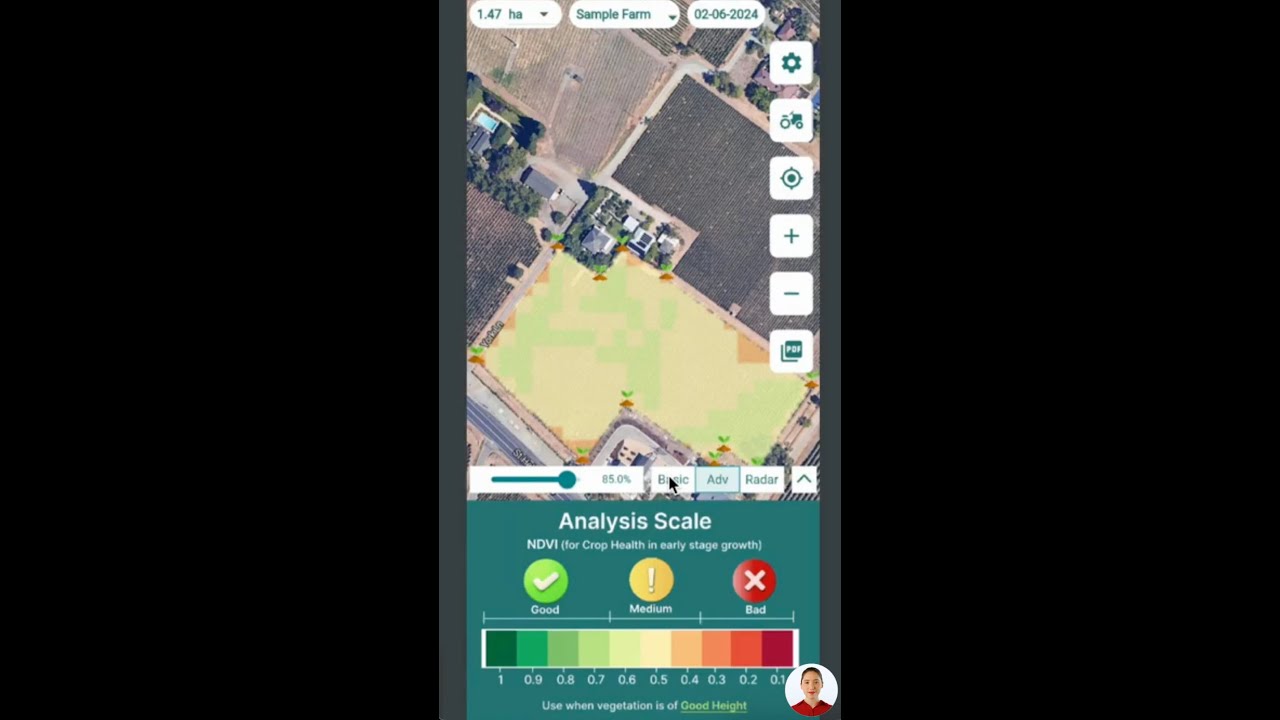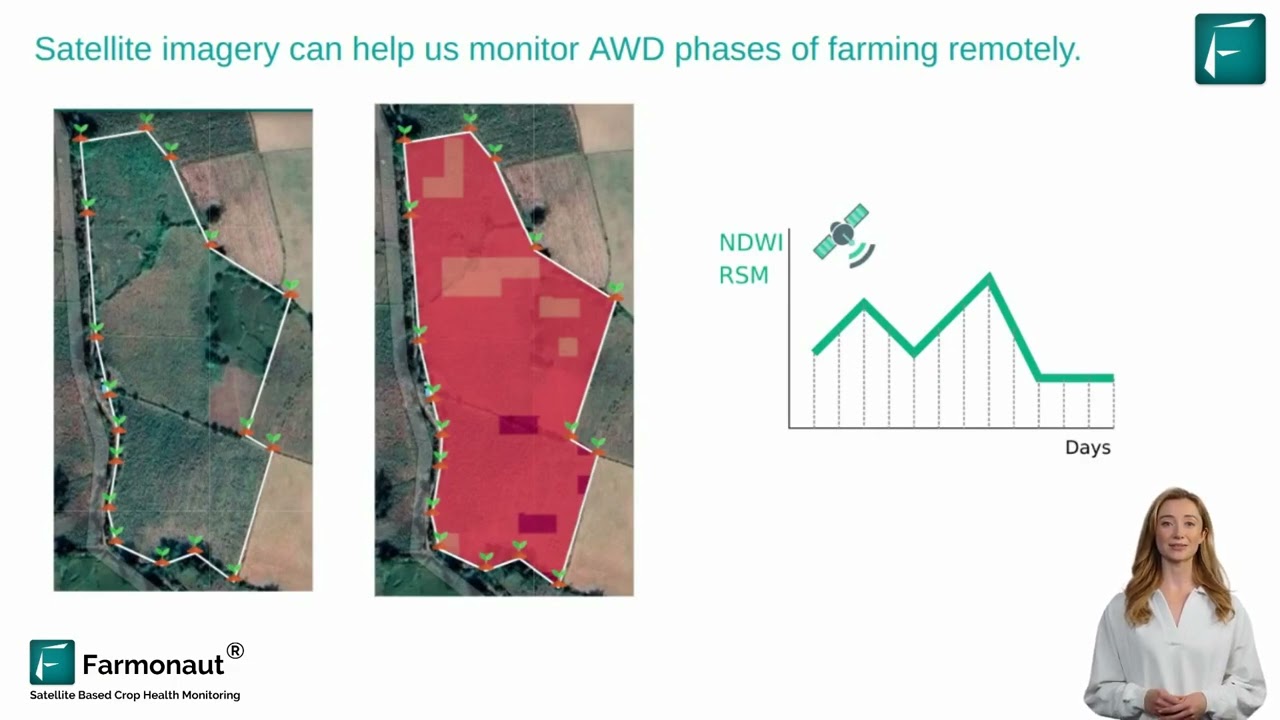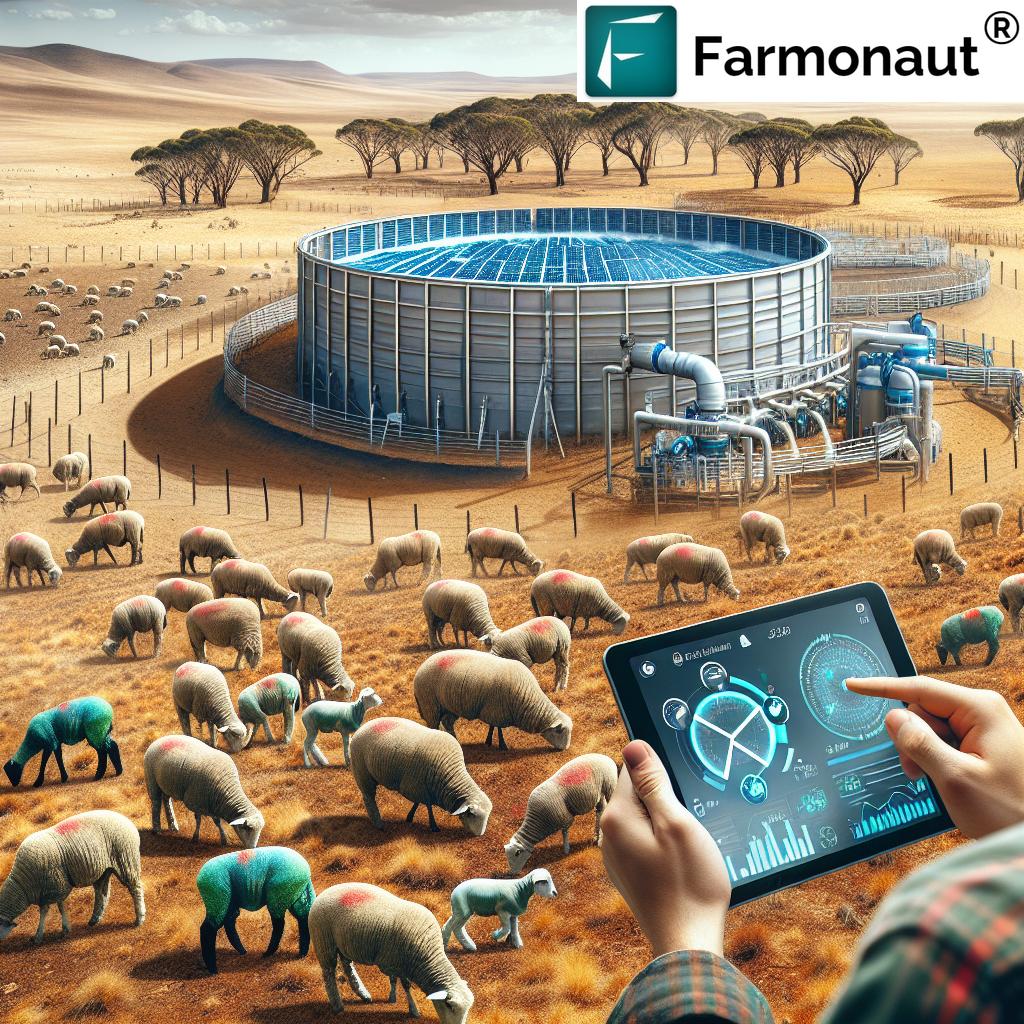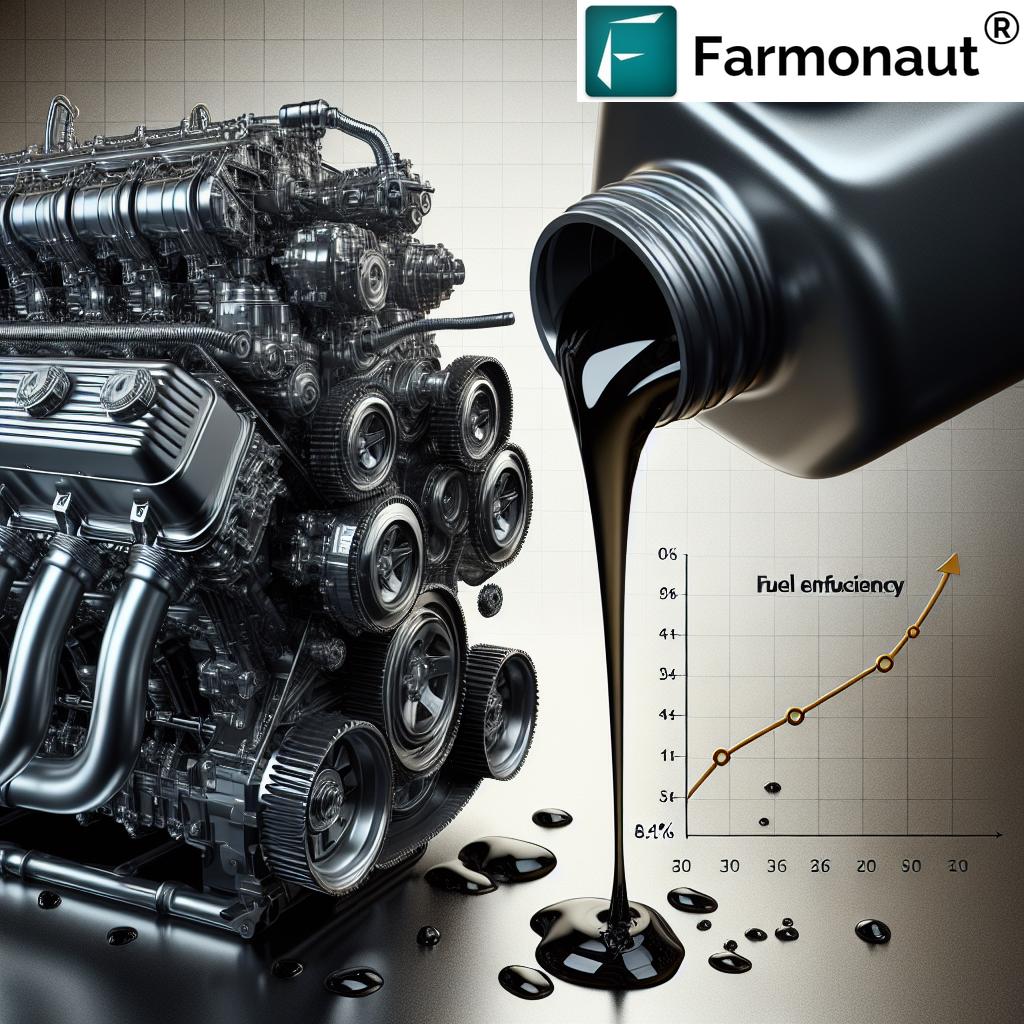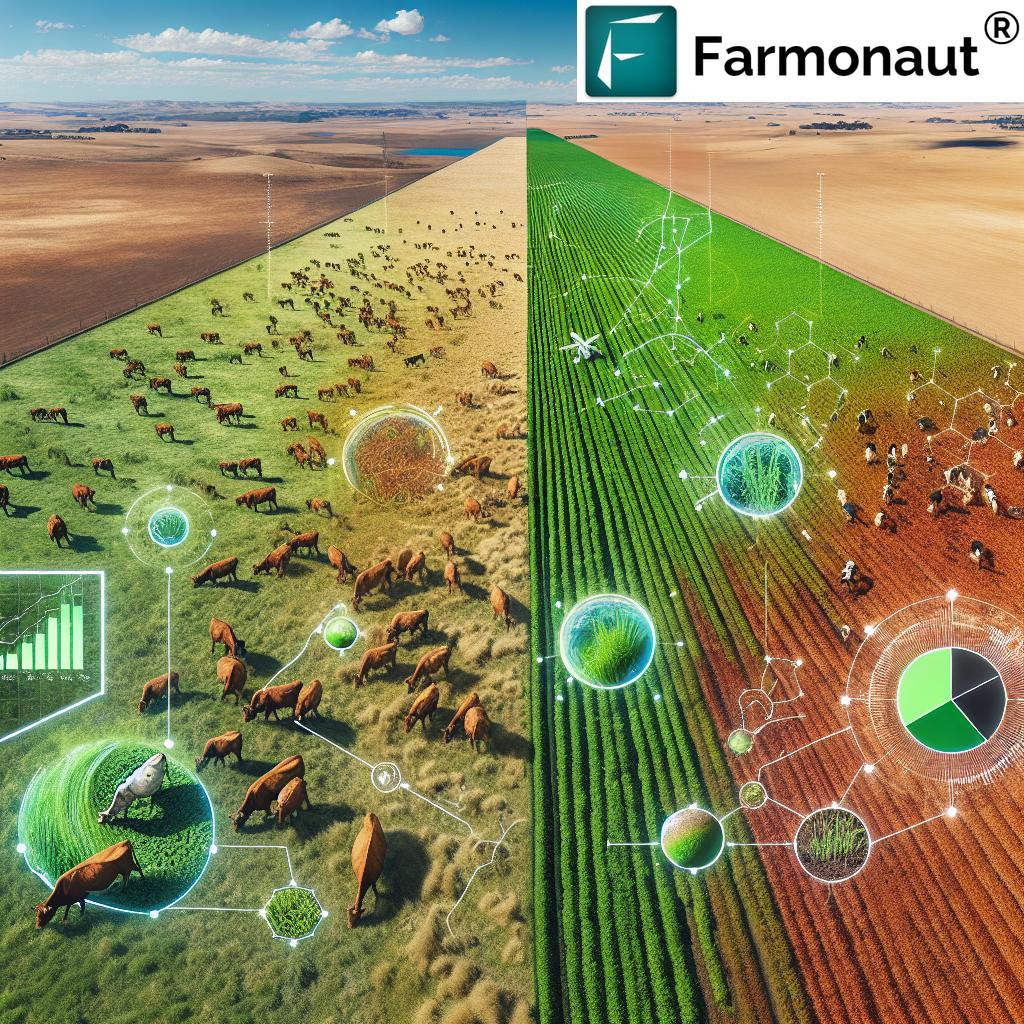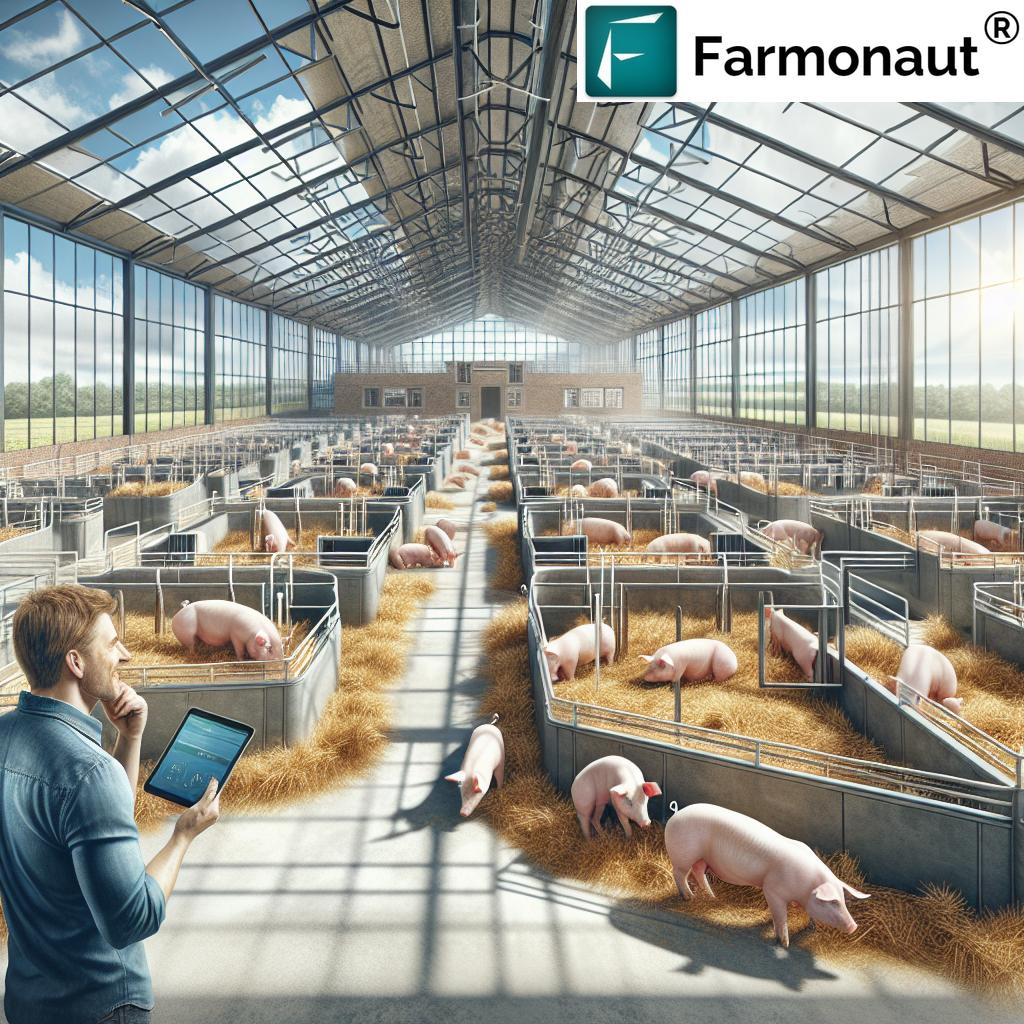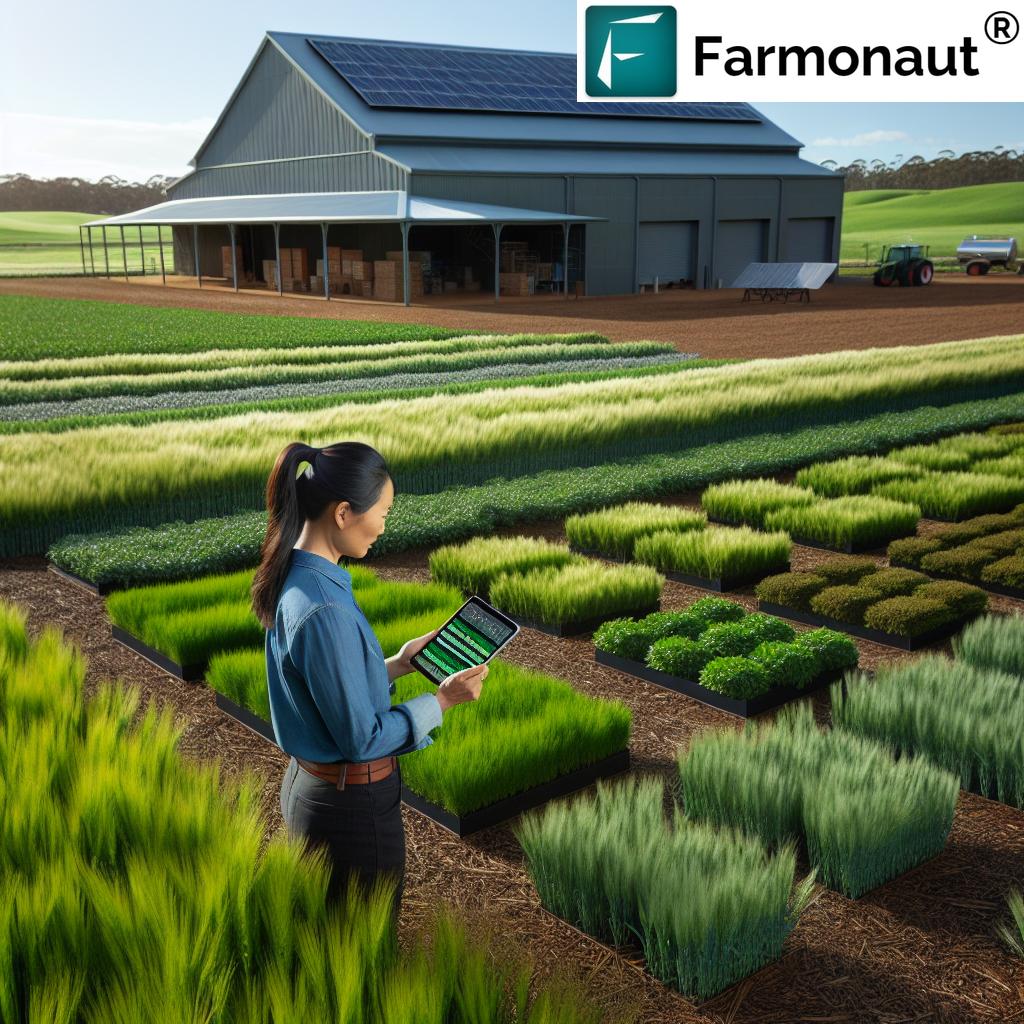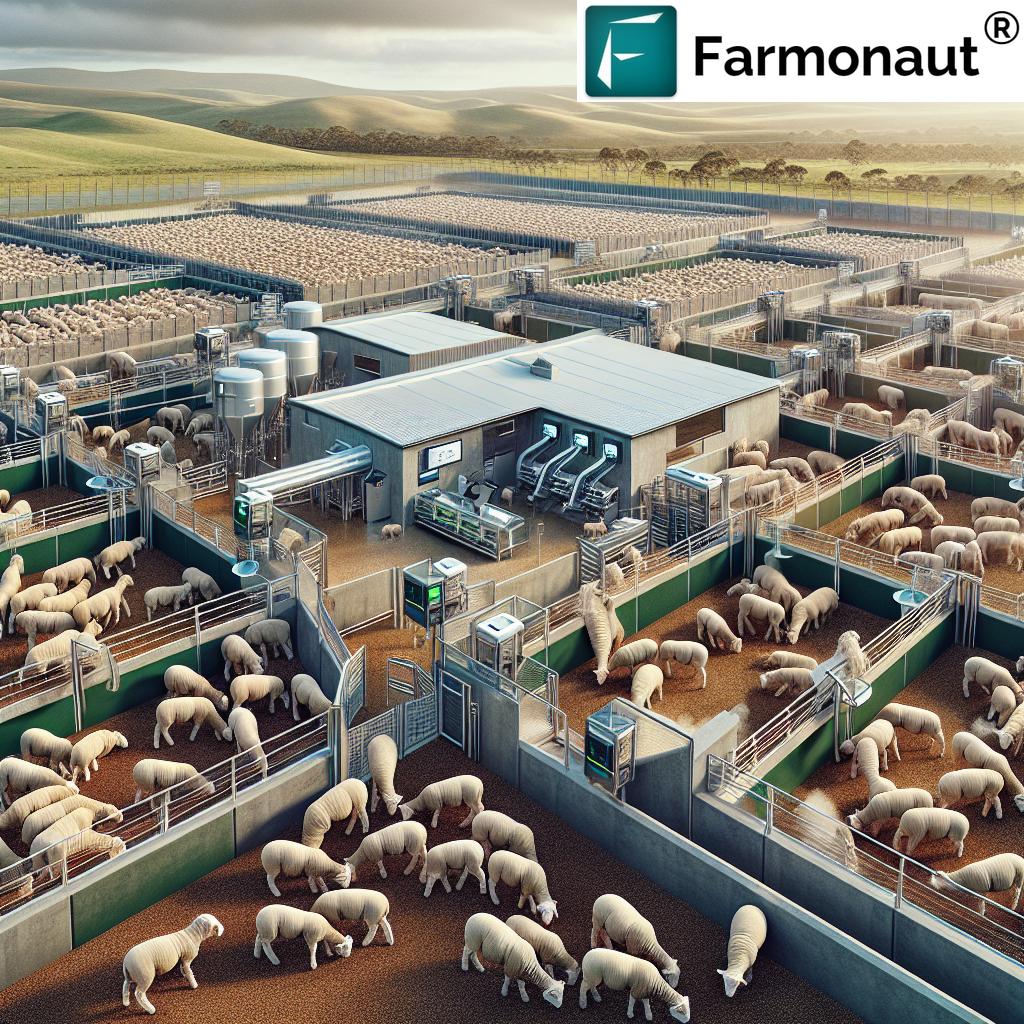Mastering Runoff Management: 10 Sustainable Farming Practices to Boost Soil Health and Water Quality in Queensland
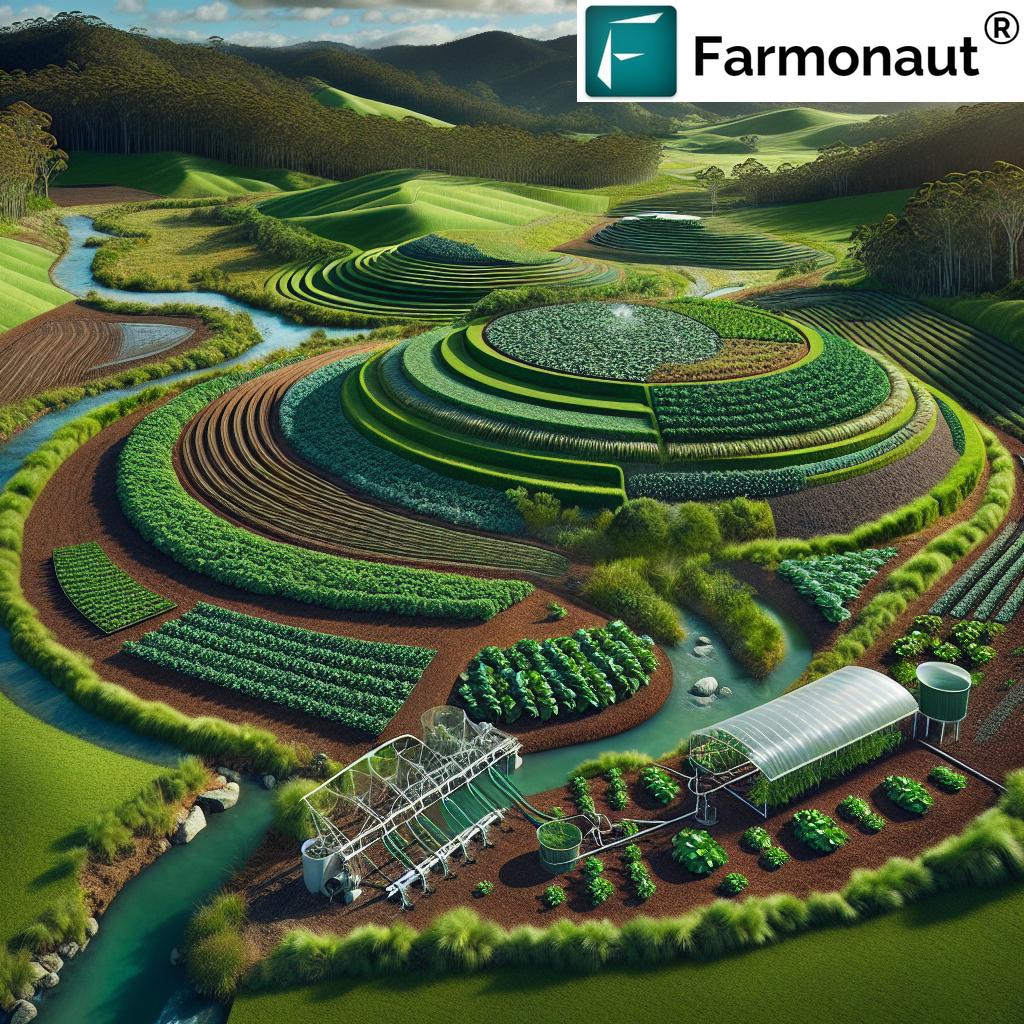
In the lush landscapes of Queensland, Australia, where agriculture thrives amidst tropical and subtropical climates, the challenge of managing agricultural runoff has become increasingly crucial. As we delve into the world of sustainable farming practices, we’ll explore how innovative techniques and technologies are revolutionizing soil erosion control and water quality management in this vibrant region.
“Queensland farmers implementing proper runoff management can reduce soil erosion by up to 90% in intensively farmed areas.”
At Farmonaut, we understand the importance of balancing productivity with environmental stewardship. Our satellite-based farm management solutions provide farmers with the tools they need to make informed decisions about their land and resources. By integrating cutting-edge technology with traditional farming wisdom, we’re helping to pave the way for a more sustainable agricultural future in Queensland and beyond.
The Impact of Runoff on Queensland’s Agricultural Landscape
Before we dive into solutions, it’s essential to understand the scope of the problem. Agricultural runoff in Queensland poses significant challenges to both soil health and water quality. The state’s unique geography and climate make it particularly susceptible to erosion and sediment transport, especially in intensively farmed areas.
- Soil erosion leads to loss of fertile topsoil, reducing farm productivity
- Sediment-laden runoff can clog waterways and harm aquatic ecosystems
- Nutrient runoff contributes to algal blooms and water quality degradation
- Chemical contamination from pesticides and fertilizers threatens biodiversity
To address these challenges, we’ve compiled a list of 10 sustainable farming practices that Queensland farmers can implement to boost soil health and improve water quality. These techniques range from in-field solutions to broader landscape management strategies, all aimed at creating a more resilient and productive agricultural system.
1. Contour Farming: Working with the Land’s Natural Shape
Contour farming is a time-tested method for controlling erosion and managing runoff on sloped land. By plowing and planting crops along the contours of the land rather than up and down slopes, farmers can significantly reduce soil erosion and slow down water movement.
Benefits of Contour Farming:
- Reduces soil erosion by up to 50% on moderate slopes
- Increases water infiltration, reducing runoff
- Improves soil moisture retention
- Can be combined with other conservation practices for enhanced effects
Implementing contour farming in Queensland’s varied terrain can be challenging, but the long-term benefits for soil health and water quality are substantial. Farmonaut’s satellite imagery can help farmers identify the optimal contour lines for their fields, making implementation more precise and effective.
2. Cover Crops: Protecting Soil Year-Round
Cover crops are an essential tool in the sustainable farmer’s arsenal. These plants are grown primarily to protect and enrich the soil during periods when cash crops are not being cultivated. In Queensland’s tropical and subtropical climate, cover crops can play a crucial role in managing runoff and improving soil health year-round.
Advantages of Cover Crops:
- Reduce soil erosion by providing ground cover
- Improve soil structure and increase organic matter content
- Enhance water infiltration and reduce surface runoff
- Suppress weeds and break pest cycles
- Can fix nitrogen when legumes are used
Selecting the right cover crop species for Queensland’s diverse agricultural regions is crucial. Farmonaut’s AI-powered advisory system can provide tailored recommendations based on local conditions and farming objectives.
3. Riparian Buffer Zones: Nature’s Water Filters
Riparian buffer zones are strips of vegetation along watercourses that act as natural filters, trapping sediments and nutrients before they reach water bodies. These zones are particularly important in Queensland, where many farms are located near sensitive waterways and coastal areas.
“Establishing riparian buffer zones can filter out up to 97% of sediments and 80% of nutrients from agricultural runoff.”
Key Functions of Riparian Buffers:
- Filter sediments, nutrients, and pesticides from runoff
- Stabilize streambanks and reduce erosion
- Provide habitat for wildlife and enhance biodiversity
- Regulate water temperature through shading
- Act as corridors for wildlife movement
Implementing effective riparian buffer zones requires careful planning and maintenance. Farmonaut’s satellite imagery can help farmers identify optimal locations for buffer zones and monitor their effectiveness over time.
4. Reduced Tillage: Minimizing Soil Disturbance
Conventional tillage practices can lead to soil degradation and increased erosion. Reduced tillage or no-till farming methods minimize soil disturbance, preserving soil structure and organic matter. These practices are gaining popularity in Queensland as farmers recognize their potential to improve soil health and reduce runoff.
Benefits of Reduced Tillage:
- Decreases soil erosion by maintaining surface residue
- Improves soil structure and water-holding capacity
- Increases soil organic matter and carbon sequestration
- Reduces fuel and labor costs
- Promotes beneficial soil microorganisms
Transitioning to reduced tillage systems can be challenging, but the long-term benefits for soil health and water quality are significant. Farmonaut’s platform can help farmers monitor soil health indicators and adjust their practices accordingly.

5. Filter Strips: Capturing Runoff at the Field’s Edge
Filter strips are areas of permanent vegetation located at the edge of agricultural fields. These strips act as a final line of defense, capturing sediments, nutrients, and other pollutants before they leave the field. In Queensland’s intensively farmed areas, filter strips can significantly reduce the impact of agricultural runoff on nearby water bodies.
Advantages of Filter Strips:
- Trap sediments and associated pollutants
- Slow down runoff, allowing for better infiltration
- Provide habitat for beneficial insects and wildlife
- Can be harvested for hay or biomass in some cases
- Enhance the visual appeal of the agricultural landscape
Designing effective filter strips requires consideration of factors such as slope, soil type, and expected runoff volume. Farmonaut’s advanced mapping tools can assist farmers in optimizing the placement and width of filter strips for maximum effectiveness.
6. Vegetated Waterways: Guiding Water Safely Across Fields
Vegetated waterways are broad, shallow channels designed to move water across agricultural land without causing erosion. These structures are particularly useful in Queensland’s undulating landscapes, where they can help manage runoff from intense tropical storms.
Benefits of Vegetated Waterways:
- Prevent gully formation and soil erosion
- Slow down water flow, reducing its erosive power
- Filter sediments and nutrients from runoff
- Can be integrated with the farm’s drainage system
- Provide corridors for wildlife movement
Proper design and maintenance of vegetated waterways are crucial for their effectiveness. Farmonaut’s satellite-based monitoring can help farmers track the health of vegetation in these waterways and identify areas that may need attention.
7. Constructed Wetlands: Nature’s Water Treatment Plants
Constructed wetlands are engineered systems that mimic natural wetlands to treat agricultural runoff. These systems are particularly valuable in Queensland, where they can help protect sensitive coastal ecosystems from the impacts of agricultural pollutants.
Functions of Constructed Wetlands:
- Remove sediments, nutrients, and other pollutants from runoff
- Provide habitat for diverse plant and animal species
- Act as water storage during dry periods
- Enhance the landscape’s aesthetic value
- Can be designed to treat specific pollutants of concern
Designing and implementing constructed wetlands requires careful planning and ongoing management. Farmonaut’s AI-powered advisory system can provide insights on optimal wetland design based on local conditions and water quality goals.
8. Terracing: Taming Steep Slopes
Terracing is an ancient practice that remains relevant in modern agriculture, especially in Queensland’s hilly regions. By creating a series of level platforms across a slope, terraces effectively reduce erosion and manage runoff.
Advantages of Terracing:
- Dramatically reduces soil erosion on steep slopes
- Increases the cultivable area on hillsides
- Improves water infiltration and retention
- Can be combined with other conservation practices for enhanced effects
- Allows for diversification of crops on different terrace levels
Implementing terraces requires significant initial investment but can provide long-term benefits for soil conservation and productivity. Farmonaut’s precision mapping tools can assist in the design and layout of terrace systems, ensuring optimal placement for maximum effectiveness.
9. Crop Rotation: Enhancing Soil Health and Diversity
Crop rotation is a fundamental practice in sustainable agriculture that involves planting different crops in succession on the same land. This practice is particularly important in Queensland’s diverse agricultural landscape, where it can help manage soil health, pests, and water use efficiency.
Benefits of Crop Rotation:
- Improves soil structure and fertility
- Reduces pest and disease pressure
- Enhances water use efficiency
- Diversifies farm income
- Can reduce reliance on synthetic inputs
Designing effective crop rotations requires careful planning and consideration of local conditions. Farmonaut’s data-driven insights can help farmers optimize their rotation plans based on soil health indicators, market demand, and environmental factors.
10. Sediment Basins: Capturing Runoff Before It Escapes
Sediment basins are engineered structures designed to capture and retain sediment-laden runoff from agricultural fields. These basins are particularly useful in Queensland’s intensive horticultural areas, where they can significantly reduce the impact of erosion on downstream water bodies.
Functions of Sediment Basins:
- Trap sediments and associated pollutants
- Reduce peak runoff rates during storm events
- Provide a source of water for irrigation
- Can be designed to handle specific soil types and runoff volumes
- Protect downstream water resources from sedimentation
Proper design and maintenance of sediment basins are crucial for their effectiveness. Farmonaut’s satellite monitoring can help farmers track sediment accumulation and plan maintenance activities to ensure optimal performance.
Implementing Sustainable Runoff Management with Farmonaut
As we’ve explored these 10 sustainable farming practices, it’s clear that effective runoff management requires a holistic approach tailored to the unique conditions of each farm. This is where Farmonaut’s advanced agricultural technology comes into play.
Our satellite-based crop health monitoring system provides real-time insights into vegetation health, soil moisture levels, and other critical metrics. This data enables farmers to make informed decisions about irrigation, fertilizer usage, and pest management, ultimately optimizing crop yields while minimizing runoff and resource wastage.
The Jeevn AI Advisory System takes this a step further by delivering personalized farm advisory services. By analyzing satellite data and other inputs, Jeevn AI generates customized advice on implementing and maintaining runoff management practices, improving overall farm productivity and environmental stewardship.
For those interested in exploring how Farmonaut can support their sustainable farming journey, we offer several ways to get started:
- Web App:

- Mobile Apps:


- API Access: For developers and businesses looking to integrate our data into their systems, we offer API access. Learn more at our API page and check out our API Developer Docs.
Comparison of Runoff Management Practices
| Practice Name | Implementation Difficulty | Cost Effectiveness | Soil Health Impact | Water Quality Improvement | Erosion Control Effectiveness |
|---|---|---|---|---|---|
| Contour Farming | Moderate | High | Medium | Medium | High |
| Cover Crops | Easy | Medium | High | Medium | Medium |
| Riparian Buffer Zones | Moderate | Medium | Medium | High | High |
| Reduced Tillage | Moderate | High | High | Medium | High |
| Filter Strips | Easy | High | Low | High | Medium |
| Vegetated Waterways | Moderate | Medium | Medium | High | High |
| Constructed Wetlands | Difficult | Low | Medium | High | Medium |
| Terracing | Difficult | Low | High | Medium | High |
| Crop Rotation | Easy | High | High | Medium | Low |
| Sediment Basins | Moderate | Medium | Low | High | High |
Conclusion: A Sustainable Future for Queensland Agriculture
As we’ve explored throughout this blog post, mastering runoff management is crucial for the long-term sustainability and productivity of Queensland’s agricultural sector. By implementing these 10 sustainable farming practices and leveraging advanced technologies like those offered by Farmonaut, farmers can significantly boost soil health, improve water quality, and ensure the resilience of their operations in the face of environmental challenges.
Remember, every farm is unique, and the best approach to runoff management will vary depending on local conditions, crop types, and specific environmental goals. We encourage Queensland farmers to explore these practices, consult with local agricultural experts, and consider how Farmonaut’s innovative solutions can support their journey towards more sustainable and productive farming.
Together, we can create a future where Queensland’s agriculture thrives in harmony with its rich and diverse ecosystems, setting a global example for sustainable farming practices.
Frequently Asked Questions (FAQ)
- What is agricultural runoff, and why is it a concern in Queensland?
Agricultural runoff refers to water that flows over farmland, potentially carrying soil, nutrients, and chemicals into nearby water bodies. In Queensland, it’s a significant concern due to the state’s intense rainfall events and the potential impact on sensitive ecosystems like the Great Barrier Reef. - How can Farmonaut’s technology help in managing agricultural runoff?
Farmonaut’s satellite-based monitoring and AI advisory systems provide real-time data on crop health, soil moisture, and other factors. This information helps farmers optimize their resource use, reducing the likelihood of excess runoff and improving overall land management practices. - Are these sustainable farming practices suitable for all types of farms in Queensland?
While the principles behind these practices are widely applicable, the specific implementation may vary depending on factors such as farm size, crop type, soil conditions, and local climate. It’s important to adapt these practices to suit individual farm needs. - How long does it take to see results from implementing these runoff management practices?
Some practices, like reduced tillage or cover cropping, can show benefits within a single growing season. Others, such as establishing riparian buffer zones or constructed wetlands, may take several years to reach full effectiveness. Consistent application and monitoring are key to long-term success. - Can these practices help farmers comply with environmental regulations in Queensland?
Yes, many of these practices align with Queensland’s environmental regulations and best management practices for agriculture. Implementing these strategies can help farmers demonstrate their commitment to environmental stewardship and potentially meet regulatory requirements.


